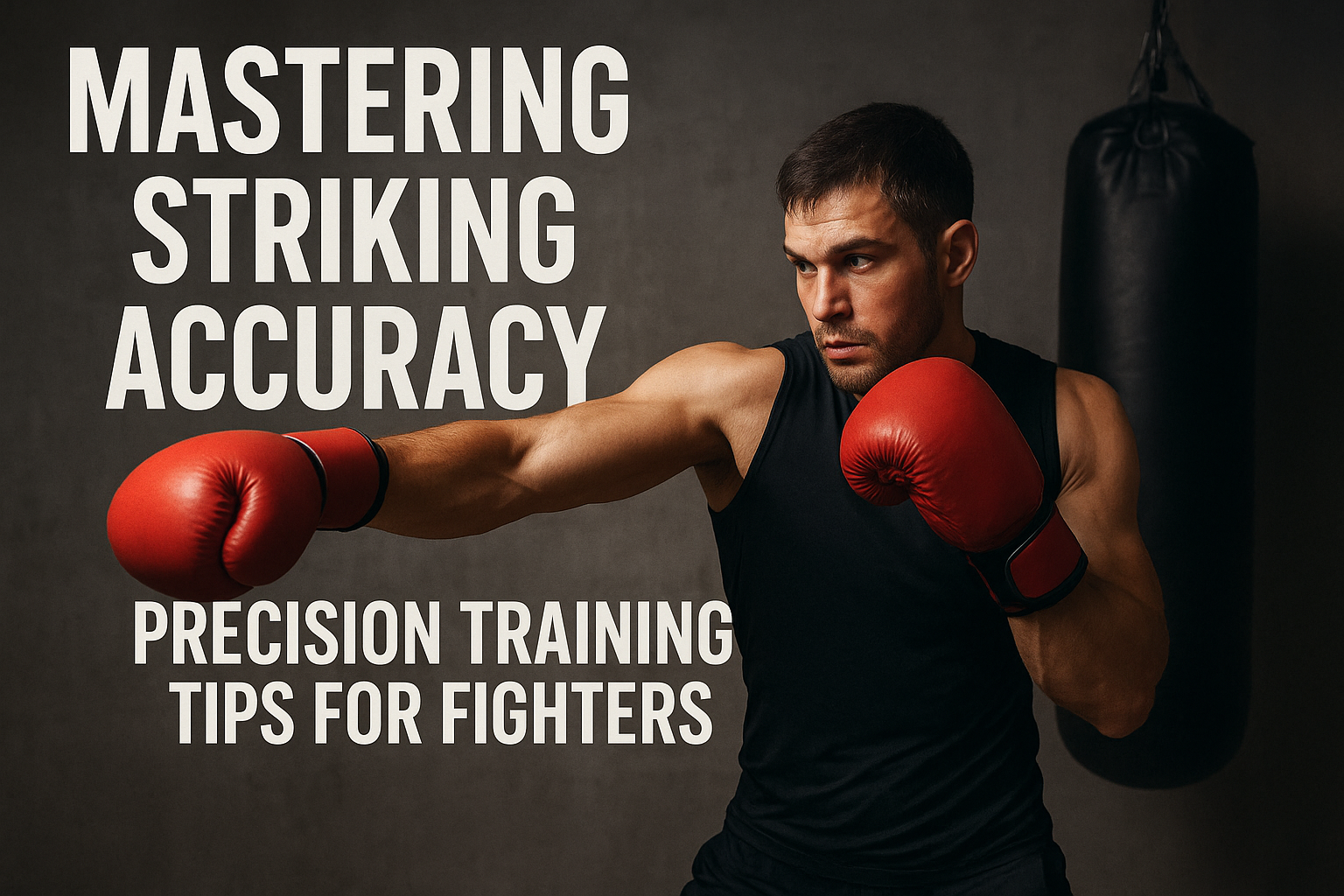Introduction to Striking Accuracy
Accuracy frequently triumphs over sheer force in combat sports like boxing, kickboxing, mixed martial arts, and muay thai. A perfectly placed strike can end a fight, while a missed power shot drains energy and leaves you open to counters. Mastering striking accuracy requires a combination of physical skill, mental focus, and consistent practice.
Why Precision Matters More Than Power
Many fighters fall into the trap of chasing knockout power. While power is important, fights are won by those who land more effective strikes. An accurate punch to the chin or liver can incapacitate an opponent just as much—if not more—than a wild haymaker.
Benefits of precision over pure power include:
- Higher strike success rate
- Better energy conservation
- Less risk of counterattacks
- Improved scoring in point-based combat sports
The Science Behind Accurate Striking
Neurological training and biomechanics work together to produce accurate striking. Through repeated repetition, the brain develops muscle memory for accurate execution by learning to estimate distance, time, and target zones. While the body modifies angles and direction to deliver clean strikes, the eyes detect openings.
Core Principles of Striking Accuracy
Balance and Footwork Control
Without a stable base, your strikes lose power and precision. Fighters should focus on keeping their center of gravity low, maintaining proper stance, and pivoting correctly during strikes.
Hand-Eye Coordination Drills
Simple drills like catching a tennis ball mid-air or hitting a moving target help sharpen reaction time. Coordination ensures your strikes land exactly where intended.
Breathing and Timing for Better Precision
Breathing out during strikes helps maintain rhythm and timing. Controlled breathing also reduces tension, allowing for smoother, more accurate punches or kicks.
Precision Training Techniques for Fighters
Target Focus Training
Shadowboxing with Specific Target Points
Instead of aimlessly shadowboxing, visualize your opponent’s chin, solar plexus, or temple, and throw strikes aimed at these points.
Using Focus Mitts for Accuracy
Focus mitt drills with a coach allow fighters to practice hitting small, moving targets, simulating real fight scenarios.
Controlled Sparring for Precision Practice
Rather than going full power, practice light sparring with the aim of landing clean, technical strikes on target areas.
Video Analysis to Correct Mistakes
Recording training sessions helps spot recurring accuracy errors. Fighters can slow down footage to analyze technique, timing, and distance control.
Equipment and Tools for Accuracy Training
Double-End Bags and Speed Bags
The double-end bag is excellent for training timing and precision, as it moves unpredictably. Speed bags help improve rhythm and shoulder endurance.
Laser and Target Systems
Modern training tools use laser pointers or digital sensors to track strike accuracy, providing instant feedback.
Common Mistakes Fighters Make in Accuracy Training
Overtraining Power Instead of Precision
Throwing every strike at full force often leads to sloppy technique. Accuracy should be prioritized before adding maximum power.
Poor Foot Placement and Movement Patterns
Bad footwork can cause strikes to miss their mark, even if the upper body mechanics are perfect.
Mental Focus and Visualization for Striking Accuracy
Visualization Drills Before Training
Close your eyes and imagine landing perfect strikes on target zones. Visualization helps program the mind for accuracy before physical practice.
Staying Calm Under Pressure
Anxious fighters tend to miss more strikes. Staying composed allows better decision-making and sharper targeting.
Advanced Tips for Professional Fighters
Micro-Adjustments During Strikes
Small changes in wrist angle, foot pivot, or shoulder rotation can make a strike land perfectly.
Adapting Accuracy to Different Opponents
Every opponent moves differently. Study their habits and adjust your targeting strategy accordingly.
FAQs on Striking Accuracy
1. How long does it take to improve striking accuracy?
With consistent practice, noticeable improvements can be seen in 4–6 weeks.
2. Can I train accuracy without a partner?
Yes. Shadowboxing, bag work, and target drills can all be done solo.
3. Is accuracy more important in boxing or MMA?
It’s equally important in both. But MMA demands precision in a variety of hitting techniques.
4. Should I focus on accuracy before power?
Yes. Once your accuracy is solid, adding power will make strikes far more effective.
5. What’s the best drill for beginners?
Focus mitt drills are excellent for beginners, as they provide clear targets and feedback.
6. Does accuracy help in street self-defense?
Absolutely. Landing precise strikes to vulnerable areas is critical in self-defense situations.
Conclusion – Becoming a Precision-Focused Fighter
Mastering striking accuracy isn’t just about hitting the target—it’s about hitting it exactly when and where it matters most. By focusing on balance, coordination, timing, and mental discipline, fighters can significantly improve their effectiveness in the ring or cage.

